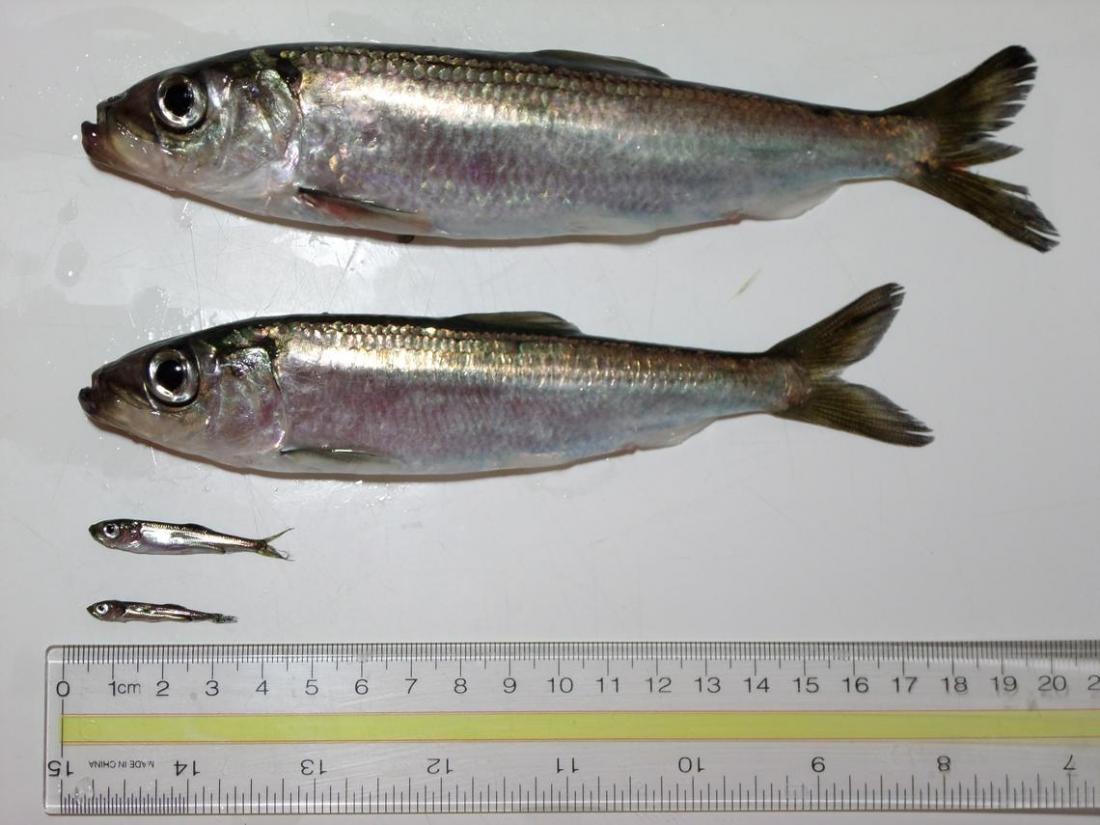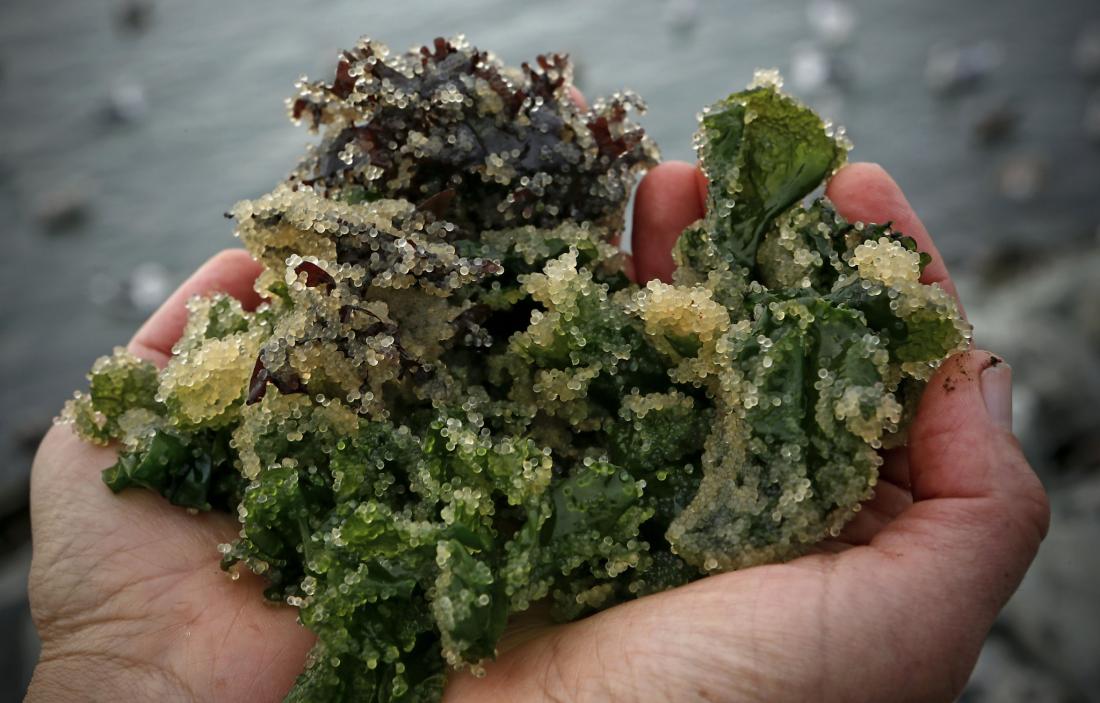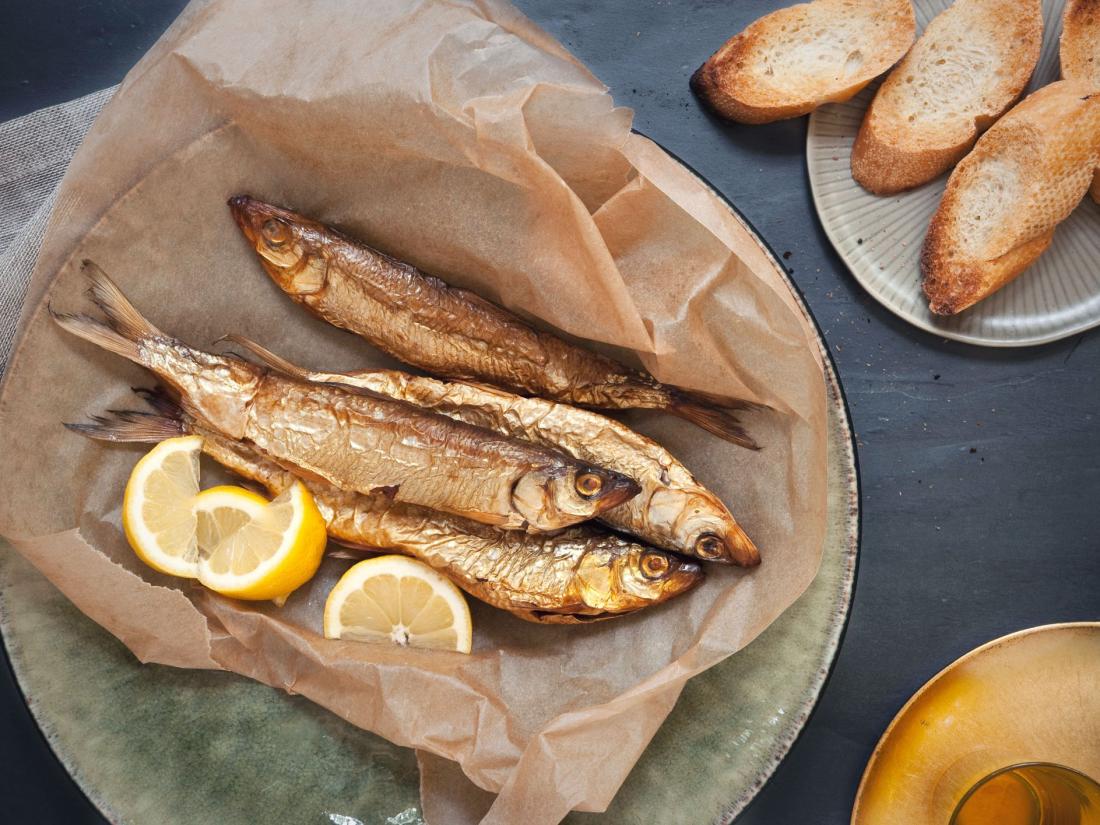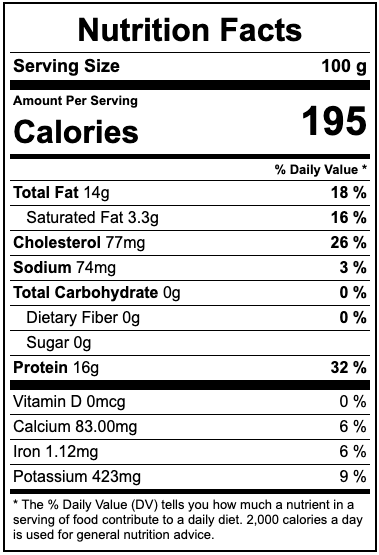Pacific Herring
Clupea pallasii
The Science
THE SCIENCE
At each stage of its life, the Pacific herring is food for many different organisms--birds, terrestrial mammals, invertebrates, fish, pinnipeds, and whales all rely on schools of herring and their roe. [3]

Taxonomic description
- Small schooling fish that can reach 46 cm (18 inches) in length, but typically is not longer than 22.9 cm (9 inches). [1]
- Typically has a dark blue to olive color on its back, which fades to a silver belly. There are no distinctive dark spots. [2]
Distribution
- Found in schools off the coasts of the Arctic, Western Pacific, and Eastern Pacific. Found throughout the coasts of California, but is more common in Northern California. [2]
Life history
- Lives 8 to 16 years, and reaches sexual maturity at about 3-4 years. [1]
- When reproducing, travels into inshore estuaries to breed. A female herring will turn to her side to deposit her eggs on the bottom or on kelp, while a male herring will release milt to fertilize the eggs. [2]
- In California, spawning occurs from November through April. Females can lay up to 20,000 eggs each year! [1,16]
Habitat
- Stays by the coast and does not migrate extensively, and some landlocked populations exist. [2]
- In the summer of its first year in life, a young herring will join schools in shallow bays, inlets, and channels near the surface. By the fall, the herring will stay in deep water for 2-3 years. It will travel back to inshore estuaries to breed. [2]
- When young, feeds on crustaceans and decapod and mollusk larvae, while adult herring feeds on large crustaceans and small fishes. [2]
- At all life stages, it is vulnerable to predation, variability in ocean temperature and salinity, and longer-term climate change effects. [11]
The Fishery
THE FISHERY
Three types of herring fisheries exist: whole fish, sac roe (fish eggs), and roe on kelp! [5]

Seasonal availability
- Commercial fishing for Pacific herring in California occurs in San Francisco Bay, Tomales Bay, Crescent City Harbor, and Humboldt Bay. [4]
- The fishery season varies from year to year, but is typically open during winter months. [4]
Regulatory and managing authority
- Managed federally by the NOAA fisheries and, as established by the Magnuson-Stevens Act, the Pacific Fishery Management Council (PFMC) through the Coastal Pelagic Species Fishery Management Plan (CPSFMP) as an Ecosystem Component Species. [17]
- As established by the Marine Life Management Act, the California Fish and Game Commission (CFGC) regulates the fishery in state waters, and the California Department of Fish and Wildlife (CDFW) collects data and helps enforce FMP management rules for this fishery through the Pacifc Herring Fishery Management Plan. [4]
- The Pacifc Herring Steering Committee combines input from the industry and government entities to inform regulatory and management measures for this fishery. [4]
Gear type
- Fished in California using set gillnets, purse seines are used outside of California. [5]
- Herring eggs on kelp (known as HEOK) is harvested by hand. [5]
Status of the fishery
- Three types of Pacific herring fisheries: fisheries exist for whole fresh fish, sac roe, and roe on kelp. [5]
- Well-managed fishery, regulations adapt annually to changes in the herring population. [4,5]
- Currently, the California fishery is only allowed to take 5% of the estimated spawning biomass. [5]
Potential ecosystem impacts
- As it plays a significant role in the food web, declines in this fish's population from overfishing, pollution, or other environmental issues could potentially have rippling effects through the ecosystem. [5]
The Seafood
THE SEAFOOD
This fish is enjoyed worldwide in many regional dishes, and can be eaten smoked, baked, grilled, pan-fried, pickled, salted, canned, dried, and many more ways! [6,7,8]


Edible portions
- Whole fish can be eaten, and bones can be consumed. [6]
- The eggs-known as roe-are also eaten. [7]
Description of meat
- The meat is flaky, mild-tasting, and oily. [6]
- The roe has a slight crunch and texture similar to caviar. [7]
Culinary uses
- Extremely versatile--can be smoked, baked, grilled, pan-fried, fried, pickled, salted, canned, dried, and more. [6,7,8]
- Herring is a favorite cuisine in many parts of the world and different regions have unique ways of preparing and eating them! [6,7,8]
- For a traditional Scottish recipe for herring fried in oatmeal, visit Glasgow Guide. [9]
- For a Swedish pickled herring recipe, visit Swedish Spoon. [18]
Nutritional information
- This fish is rich in Vitamin B12, protein, and Omega-3 fatty acids. [10]
- A table of nutritional information for 100g of raw Pacific herring is on the right. [10]
Seasonal availability
- Most Pacific herring is exported, but availability should follow the fishing season. [5]
References
[1] Alaska Department of Fish and Game. n.d. Pacific Herring (Clupea pallasii). Web. http://www.adfg.alaska.gov/index.cfm?adfg=herring.printerfriendly. Accessed 8 July 2020.
[2] Binohlan, C.B., Torres, A.G. n.d. Fish Base. Clupea pallasii pallasii. Web. https://www.fishbase.se/summary/1520. Accessed 8 July 2020.
[3] Pacific Herring. 2015. Web. https://www.pacificherring.org/explorer/food-web. Accessed 8 July 2020.
[4] California Department of Fish and Wildlife. 2020. Pacific Herring Fishery Management Plan. Web. https://wildlife.ca.gov/Fishing/Commercial/Herring/FMP. Accessed 8 July 2020.
[5] Siple, M. Seafood Watch. 2014. Pacific Herring U.S., California: Eastern Central Pacific Set gillnets. Web. https://www.seafoodwatch.org/recommendation/herring/green-herring-pacif…. Accessed 8 July 2020.
[6] Bland, A. NPR. 2016. Herring Headache: The Big Obstacles to Eating Small Fish in California. Web. https://www.npr.org/sections/thesalt/2016/02/29/467954091/herring-heada…. Accessed 8 July 2020.
[7] Chen, N. Just One Cookbook. n.d. Kazunoko (Herring Roe). Web. https://www.justonecookbook.com/kazunoko/. Accessed 8 July 2020.
[8] Morais, R. Grapes & Grains. 2017. European Traditions and History of the Herring Delicacy. Web. https://www.grapesandgrains.org/2017/08/european-traditions-and-history…. Accessed 8 July 2020.
[9] Glasgow guide. n.d. Scottish Recipes: Herring in Oatmeal. Web. http://www.glasgowguide.co.uk/scottish_recipes_Herring_in_Oatmeal.htm. Accessed 8 July 2020.
[10] Nutrition Value. 2020. Fish, raw, Pacific, herring. Web. https://www.nutritionvalue.org/Fish%2C_raw%2C_Pacific%2C_herring_nutrit…. Accessed 8 July 2020.
[11] Reum, J., et al. Multiscale influence of climate on estuarine populations of forage fish: the role of coastal upwelling, freshwater flow and temperature. 2011. Marine Ecology Progres Series, Vol. 425. pp.203-215. doi: 10.3354/meps08997
[12] Breiter, M. n.d. Photo of Pacific herring school. Web. https://www.hakaimagazine.com/news/how-do-herring-learn-to-migrate-go-t…. Accessed 9 July 2020.
[13] Hershberger, P. 2014. Photo of specific pathogen-free Pacific herring. Web. https://www.usgs.gov/media/images/specific-pathogen-free-pacific-herring. Accessed 9 July 2020.
[14] Macor, M. 2014. Photo of person holding kelp with herring roe. Web. https://www.sfgate.com/science/article/They-re-back-the-bay-s-herring-h…. Accessed 9 July 2020.
[15] Uribe, C. 2019. Photo of smoked herring with lemon and toast. Web. https://www.thespruceeats.com/smoked-herring-recipe-1808943. Accessed 9 July 2020.
[16] California Department of Fish and Wildlife Pacific Herring Fishery Overview. n.d. Web. https://nrm.dfg.ca.gov/FileHandler.ashx?DocumentID=91601&inline. Accessed 20 July 2020.
[17] Coastal Pelagic Species Fishery Management Plan. 2019. Pacific Fishery Management Council. Web. https://www.pcouncil.org/documents/2019/06/cps-fmp-as-amended-through-a…. Accessed 24 August 2020.
[18] Fredborg, I. Swedish Spoon. 2020. Easy Swedish pickled herring-and its long history. Web. https://swedishspoon.com/pickled-herring/. Accessed 9 February 2021.



